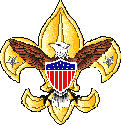|
 Traffic Safety
Traffic Safety
Requirements
2002
-
Do the following:
-
Make a scrapbook containing 10 newspaper articles
about serious traffic crashes. Prepare a summary table of facts in the
articles indicating the number of people injured, the number killed,
type of crash (single vehicle, head-on collision, etc.), time of
occurrence, age of the driver, whether alcohol or drugs were involved,
use of safety belts, and any other factors that were reported to have
contributed to the crash (weather conditions, fatigue, construction,
etc.). Discuss how these crashes could have been prevented.
-
Describe how alcohol affects the human body and why
this is a problem for safely driving a motor vehicle. Research the
legal blood alcohol concentration in your state and the consequences
for driving while intoxicated.
-
Describe at least four factors to be considered when
an engineer designs a road or highway. Explain how roadside hazards
and road conditions contribute to the occurrence and seriousness of
traffic crashes.
-
Explain why a driver who is fatigued should not
operate a motor vehicle. Describe how volunteer drivers can plan to be
alert when transporting Scouting participants.
-
Do the following:
-
Identify the different types of occupant restraint
systems used in motor vehicles. Describe how they work and their
purpose for safety. Demonstrate how to properly wear lap and shoulder
belts. Explain why it is important for drivers and passengers to wear
safety belts at all times.
-
List five safety features found in motor vehicles
besides occupant restraint systems. Describe each feature, how each
works, and how each contributes to safety.
-
Do the following to show your knowledge of car care for
safety maintenance:
-
Using your family car or another vehicle, demonstrate
that all lights and lighting systems in the vehicle are working.
Describe the function and explain why each type of light is important
to safe driving.
-
Using your family car or another vehicle, demonstrate
how to check tire pressure and identify the correct tire pressure for
the vehicle. Explain why proper tire pressure is important to safe
driving.
-
Demonstrate a method to check for adequate tire tread.
Explain why proper tread is important to safe driving.
-
Demonstrate with a smear-and-clear test if the
windshield wiper blades will clear the windshield completely or need
to be replaced. Describe instances in good and bad weather when
windshield washers are important to safe driving.
-
Do the following:
-
In a location away from traffic hazards, measure with
a tape measure - not in a car - and mark off with stakes the distance
that a car will travel during the time needed for decision and
reaction, and the braking distances necessary to stop a car traveling
30, 50, and 70 miles per hour on dry, level pavement. Discuss how
environmental factors such as bad weather and road conditions will
affect the distance.
-
Demonstrate the difference in nighttime visibility
between a properly lit bicycle and rider (or a pedestrian) wearing
reflective material and a bicycle and rider with no lights (or a
pedestrian) dressed in dark clothing, without reflective material.
-
Make a chart of standard traffic signs. Explain how
color and shape are used to help road users recognize and understand
the information presented. Explain the purpose of different types of
sign: signals, and pavement markings.
-
Describe at least three examples of traffic laws that
apply to drivers of motor vehicles and that bicyclists must also obey.
-
Do ONE of the following:
-
Interview a traffic law enforcement officer in your
community to identify what three traffic safety problems the officer
is most concerned about. Discuss with your merit badge counselor
possible ways to solve one of those problems.
-
Initiate and organize an activity to demonstrate the
importance of traffic safety. Activities could include making a
traffic safety presentation before a school assembly, to classes of
younger students, or to another large group of people; having a staged
demonstration of the consequences of a crash, working with the police
and paramedics; organizing a presentation to the students of your
school by an emergency room doctor and/or nurse to describe their
experiences with motor vehicle crash victims; organizing a clinic to
demonstrate safe bicycle riding and helmet use.
-
Accompanied by an adult, pick a safe place to observe
traffic at a controlled intersection (traffic signal or stop sign) and
survey (1) such violations as running a red light or stop sign; or (2)
seat belt usage. Count the number of violations or number of drivers
not wearing a seat belt. Record in general terms if the driver was
young/old, male/ female. Discuss the findings with your merit badge
counselor.
-
Based on what you have learned so far, develop a
checklist for a safe trip. Share the checklist with your merit badge
counselor, and use the checklist whenever your family makes a vehicle
trip. Include on the list the responsibilities of the driver and the
passengers for before and during the trip.
|

.jpg)

 Traffic Safety
Traffic Safety